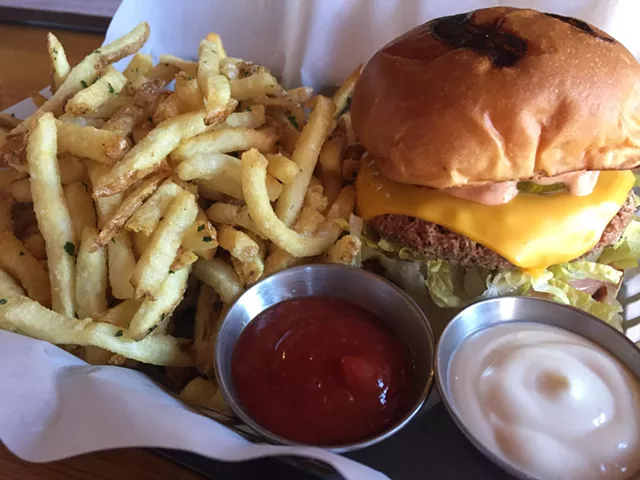Yes, and I did. The burger is quite the feat of food science — five years in the making, according to the website of its parent company Impossible Foods. The ingredients indicate that the burgers are an amalgamation of plant-based proteins, fats and flavorings formulated to replicate meat.
"We recreated the precise flavors, textures, aromas and nutrition of ground beef — using only plants," company literature reads. "By understanding meat at the molecular level, we made a juicy, delicious burger that's better for the planet."
The thing tastes like beef and oozes red juice, thanks to the inclusion of plant-based heme — as in hēm-oglobin, the iron-carrying protein complex that gives oxygenated blood its red color and imparts to meat its savory umami flavor. Impossible's heme is lab-created using a gene for soy-based leghemoglobin (the legume form of hemoglobin). Techs insert the soy gene into yeast and, as the yeast ferments, it produces heme.
The first Impossible patties made their debut in 2016 in California, where Impossible Foods is located. Since opening a huge production facility in Oakland last September, the patties have gone national, popping up at thousands of restaurants from Seattle to Miami.
Winooski's Mule Bar is the first Vermont restaurant to carry the burger. Earlier this month, I stopped in for a taste.
"I was completely flabbergasted when I tried it," the bartender said when I ordered it on a Wednesday afternoon. It was meaty, she added — like meat, but not meat.
When the burger arrived, I understood what she meant: It looked like beef: gray-brown and with a medium grind, seared brown on the top with red liquid oozing from the middle.
I took a bite. At $16 (with fries), it tasted like a McDonald's burger, in that way that McDonald's burgers are at once beefy and not at all beefy. But better. Or maybe not. I'm willing to concede that the fast-food flavor might have been because of the stuff the patty was packaged with — American cheese; Mule's Special Sauce, similar to that found on a Big Mac; shredded lettuce and pickles.
McSimilarities aside, the Impossible Burger was definitely not as greasy as a beef patty, and it was utterly unlike any plant-based "burger" I'd ever eaten before. That may not sound like a ringing endorsement, but it had that delightful savory quality that many veggie burgers lack, and it seemed fatty enough to bleed with juice and flavor in a way that most bean or other plant-protein patties can't.
The texture was a little looser — crumbly, even — than meat, and the sandwich jumped the confines of its bun and got all over my hands, just like any good pub burger would. It came with a heaping pile of Mule's beautifully crunchy, herb-laced fries and that glorious, godly smooth aioli, a huge plus.
The verdict? Overall, it's totally satisfying. And while I'm pretty flexible about what a "burger" is or should be — I was a vegetarian for years and am cool with veggie burgers, bean burgers, salmon burgers, whatever. But in this case, I'm not sure flexibility is a requirement. The Impossible Burger is, from this meat eater's perspective, good. Maybe even impossibly so.
https://www.sevendaysvt.com/BiteClub/archives/2018/02/25/like-meat-but-not-sampling-the-impossible-burgerBagikan Berita Ini
















0 Response to "Like Meat, But Not: Sampling the Impossible Burger"
Post a Comment